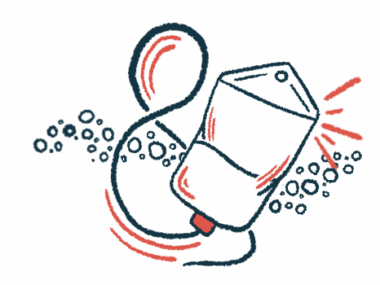If it wasn’t for my bad luck, I’d have no luck at all
Life with aHUS has brought numerous health complications for this writer
Written by |

A rare disease diagnosis can be scary, overwhelming, and life-changing, often bringing unexpected health complications and comorbidities. During my time with a rare disease, I’ve learned that I have a proclivity for medical drama.
In September 2020, I nearly died when COVID-19 complications triggered atypical hemolytic uremic syndrome (aHUS). I was in the intensive care unit for nearly two months with kidney failure, liver failure, hemolytic anemia, and many other issues.
Not only did I develop a rare disease, but I also experienced even rarer complications. First it was May-Thurner syndrome and swelling. Then I needed a hysterectomy after experiencing a nine-month menstrual cycle. I had hypertrophic cardiomyopathy, which causes the heart muscle to thicken. (Cardiovascular complications occur in an estimated 43% of aHUS patients.) Two falls contributed to a huge liver hematoma, and I learned that I have the thrombomodulin gene mutation, which occurs in 3-5% of all aHUS patients.
One might think, “OK, she had the entire book thrown at her. No way there’s more, right?”
Oh, no, there’s more.
Nightmares and reality
Due to the severity of my kidney damage, I needed dialysis for five months. There are a few options for how to receive it, and I decided to do my dialysis at a clinic with a port catheter in my right shoulder. This consisted of two tubes that hung out of my chest to remove, clean, and return my blood.
But, of course, I had complications with my dialysis port. To start, the surrounding tissue got infected twice. This is very dangerous because the infection could easily spread to my blood and my heart. But then the unthinkable happened.
I had a recurring nightmare that I was doing in-home dialysis and would “wake up” feeling wet and cold. I’d slowly open my eyes, but my vision wouldn’t fully clear. I’d look down to see that my catheter had become unhooked from the machine, and I was cold and wet because I was covered in my own blood and bleeding out. My vision was blurry because I was losing consciousness. I tried to scream, but I was so weak I could barely let out a whimper. My vision would fade into darkness as I took my last breath … and I’d wake up. I had this dream every single night.
So you can imagine my sheer terror when this dream came to life. Dialysis made me ill and exhausted, so it was normal for me to nap afterward. I was lying in bed watching TV one day and nodded off. I woke up and something felt weird about the right side of my shirt. I looked down and saw blood and a bulge.
My eyes got wide as I slowly pulled down the collar of my shirt. My dialysis catheter had fallen out of my chest and was barely hanging on by the end of the long tubing. The bulge was where the tubing had bunched up under my shirt, and I was wet because I was bleeding. I sat there for a moment dumbfounded. I blinked hard.
Was I dreaming again? Or hallucinating? Or was this really happening and I was about to bleed out?
I collected my thoughts and tried to shake off my panic so I could call the nurse line. Each ring felt like an eternity. As I waited, I don’t know what I was thinking, but I looked down and slowly pushed the tubing back into my chest. Once I did, most of the bleeding stopped. Then there was a human on the other end of the phone.
I explained to the nurse what had happened, and there was no response. She was so quiet I could’ve heard a pin drop. She finally answered with disbelief in her voice. “Ma’am, tell me what happened again.”
I did, and she was still shocked. She asked if I was still bleeding, and I told her it stopped when I pushed the catheter back in. She audibly gasped at this confession.
“No, no, noooooo!”
Apparently I shouldn’t have pushed it back in due to infection risk. So, needless to say, I needed cultures, an emergency removal, and a new port catheter put in once I was determined to be free of infection.
My nephrologist said that in his 17 years of practice, he’d never seen a dialysis patient have so many issues in such a short time. And he certainly hadn’t seen a port catheter fall out.
If nothing else, my time with aHUS has been an adventure. It’s amazing what the human body and spirit can endure. This disease always keeps my medical team guessing! It can look so different from patient to patient. Each journey may start with a textbook clinical diagnosis, but the path seems to unfold into an entirely different odyssey for each of us.
Note: aHUS News is strictly a news and information website about the disease. It does not provide medical advice, diagnosis, or treatment. This content is not intended to be a substitute for professional medical advice, diagnosis, or treatment. Always seek the advice of your physician or other qualified health provider with any questions you may have regarding a medical condition. Never disregard professional medical advice or delay in seeking it because of something you have read on this website. The opinions expressed in this column are not those of aHUS News or its parent company, Bionews, and are intended to spark discussion about issues pertaining to aHUS.






Leave a comment
Fill in the required fields to post. Your email address will not be published.